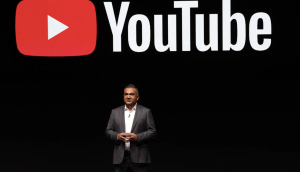Every Friday, MIC is inviting guest curators to round up the best and brightest examples from the mediaverse for a little show-and-tell session – everything from the campaigns that most impress them to revolutionary new tools – called MICpicks. We know media is cool, so we’re giving it a cool-hunting forum to share Really Important Things That Are Happening Out There, and/or identify the work that exemplifies Really Good Media Thinking.
First up is Mike Sharma, who just joined Fjord Interactive, the interactive and online business unit of Cossette, in Toronto as VP and GM. Sharma’s expertise spans creative and media, from helming the interactive practices at Zig and Ogilvy and Mather, to six years at Sympatico/MSN. And here’s what Mike has to say on his top three picks for MIC:
Since this is a new column and I’m an early contributor, I’ve chosen three examples that aren’t specific media ideas but rather emerging technologies that will have impact on media and marketing. You’ll notice that all three are at the intersection of technology, online and consumers – the core ingredients to any great stand-out marketing initiative.
Number 1: Online driving offline experiences
As marketers we’ve talked about offline driving to online for years. But a unique trend of the reverse has been growing with initiatives like flash mobs (the art of gathering crowds together for a specific initiative or cause), alternative reality games (or ARGs, where players combine info/clues from the real world and online to engage in collaborative games) and geocaching (where treasures hidden all around us are uncovered by those with a GPS and a bit of searching skills). Augmented reality combines the use of computers and cameras (or video) to show us virtual elements in the ‘real world.’ Given that new mobile devices have rich screens, embedded GPS and video/image-capture capability, they’re now providing the opportunity to combine augmented reality into what’s called locative media/gaming. HP’s Mscape is just one technology that shows promise (although currently limited to specific handsets).

Want to experience it yourself? Watch the GE spot that drives you to create your own augmented reality at their Smart Grid website at (a spot with 1.1 million YouTube views at the time of writing this).
Like ARGs (Audi’s ‘Art of the Heist’ and Halo 2’s ‘I Love Bees’), this convergence of phone, Internet and the ‘real world’ allows marketers engaging in this space to break new ground in immersive consumer engagement.
Number 2: Interactive touchscreens
Again, this is an evolution rather than a revolution. Digital signage started to become interactive through mobile integration (SMS and Bluetooth) but the growing trend is in touchscreen. The iPod Touch and iPhone have raised the awareness of rich multi-touch displays. (Jeff Han should also get credit for developing breakthroughs in this field.) The opportunities are now broadening with new innovations. Technologies such as 3M’s Vikuiti film (for projecting onto glass) combined with Visual Planet’s VIP technology allow for storefronts to have stunning interactive displays on their existing glass storefronts. Microsoft’s Surface tabletop screens allow for rich multi-touch engagements. Both are creating solutions for marketers to truly engage with consumers in a wide range of applications such as storefront touchscreen info/commerce during non-business hours and rich, engaging information kiosks (see Sheraton Hotels, for example).

Mobile integration with digital signage still has its applications but you can bet you’ll see more interactive displays in the coming years…and yes, a spherical version is coming soon, too…
Number 3: Battle of the Livingroom
You may not be aware of this, but there is a war going on for your living room. Cablecos, telcos, gaming consoles, computer and equipment manufacturers are all tripping over themselves to get a share of your TV. Cablecos and telcos are pushing on-demand gaming and broadcast while companies like Microsoft and Apple have devices that you watch movies streamed from the Internet (not to mention other software companies like BeyondTV and SageTV).
In my household, my main TV content is managed by a ‘media centre’ that acts as our music, photo and video hub but also manages all our PVR functionality. It streams video and captures live TV – and often it’s hard to discern when we’re watching live TV or online content. It can stream the content to my cellphone on demand. Then there’s the Xbox 360 hooked up to the plasma in the basement – which gets live and stored content from the living room but also allows us to rent HD movies on-demand (via the Internet and Xbox Marketplace).
It’s even more dramatic south of the border. Netflix is available through TiVo and Xbox 360. Amazon’s On Demand can connect to the TiVo, Roku and certain Sony Bravia TVs. Earlier this month a service called ZillionTV was announced – a low-cost set-top box that will enable consumers to buy and rent movies or watch them for free with unskippable, targeted commercials.
Why is this relevant to marketers and media? As computers invade the living room, they introduce new, unique advertising opportunities. Applications are being built to integrate with these services or offer a high level of targeted advertising. With so many consumers already engaged in watching TV and using the Internet at the same time, it’s a natural progression that it happens on the same device, at the same time.
























